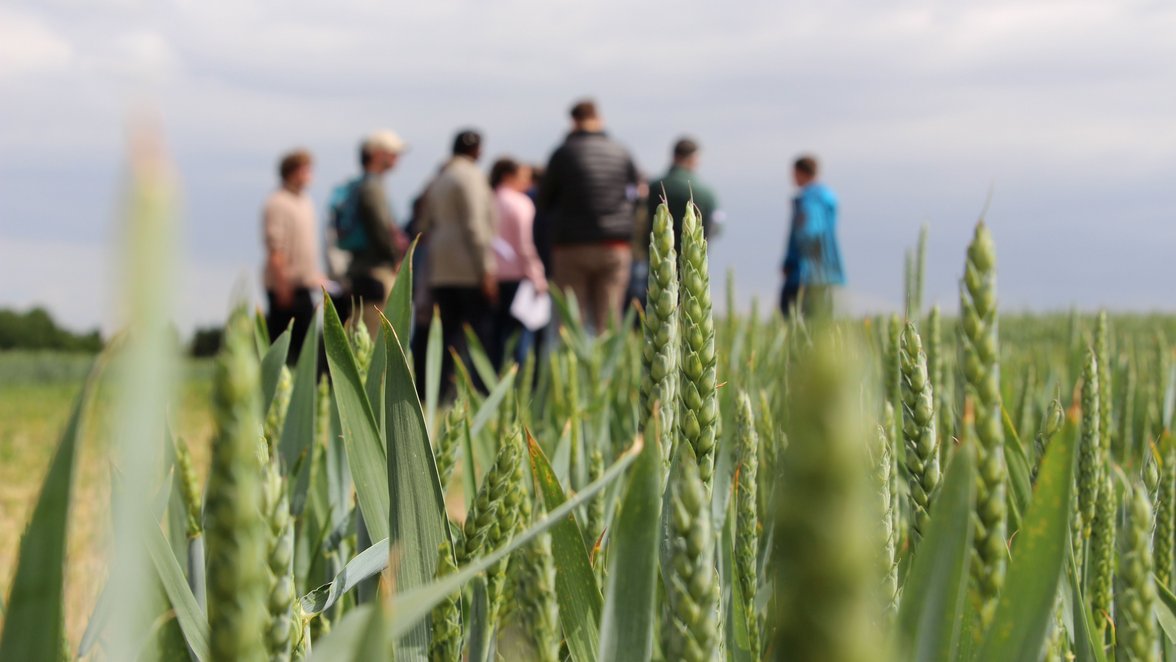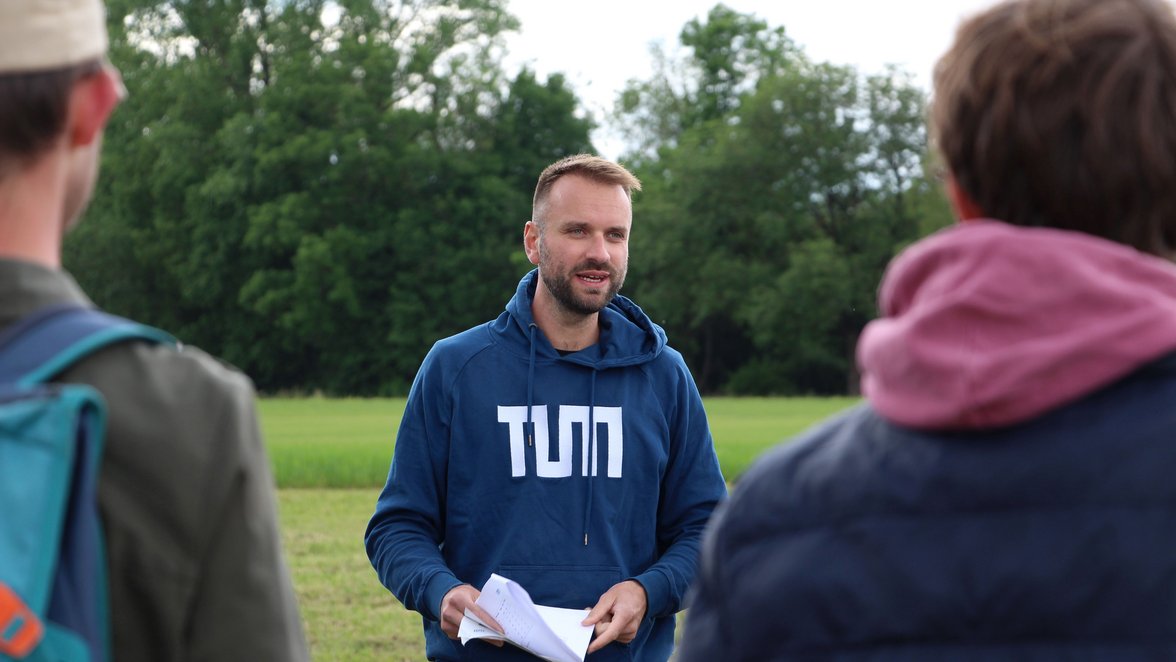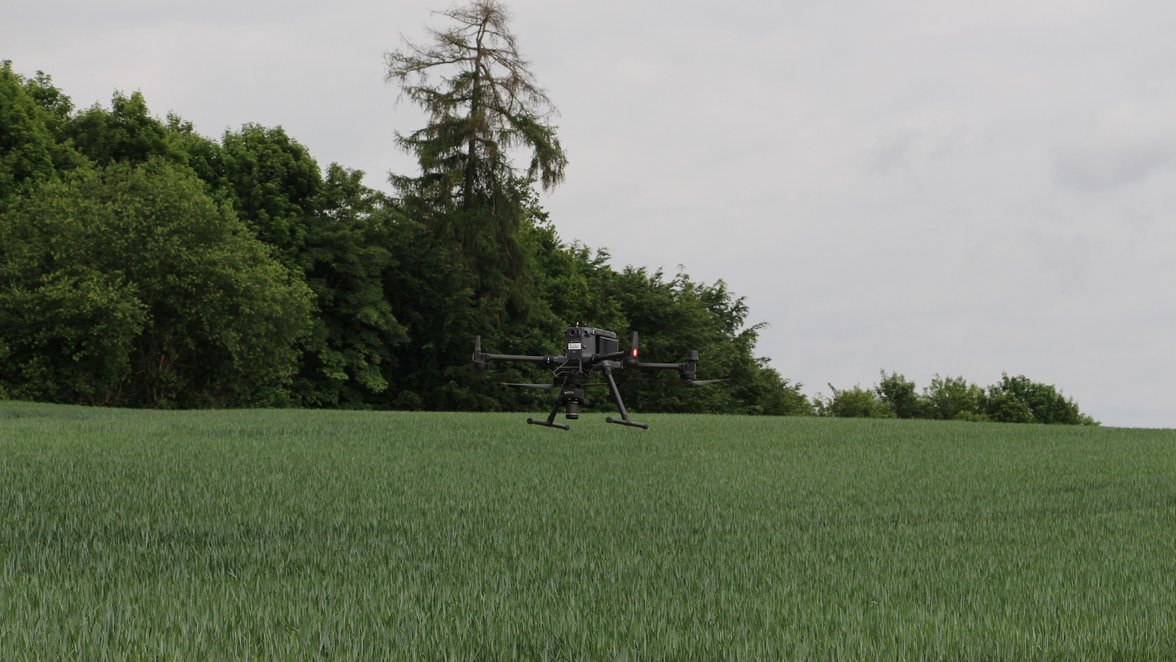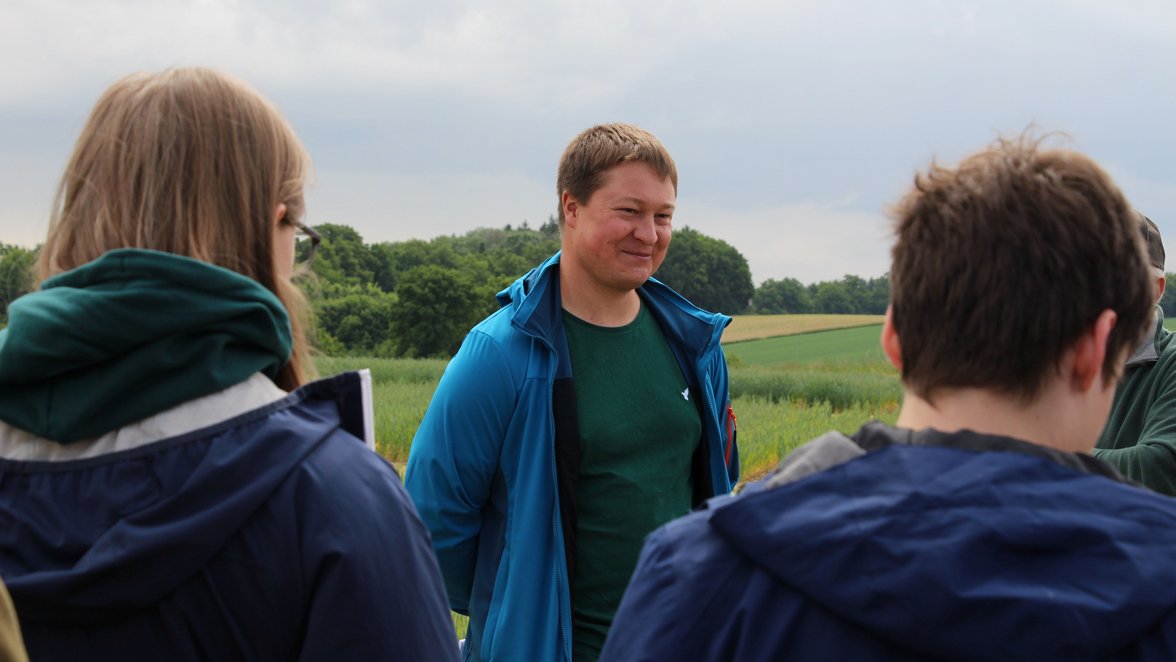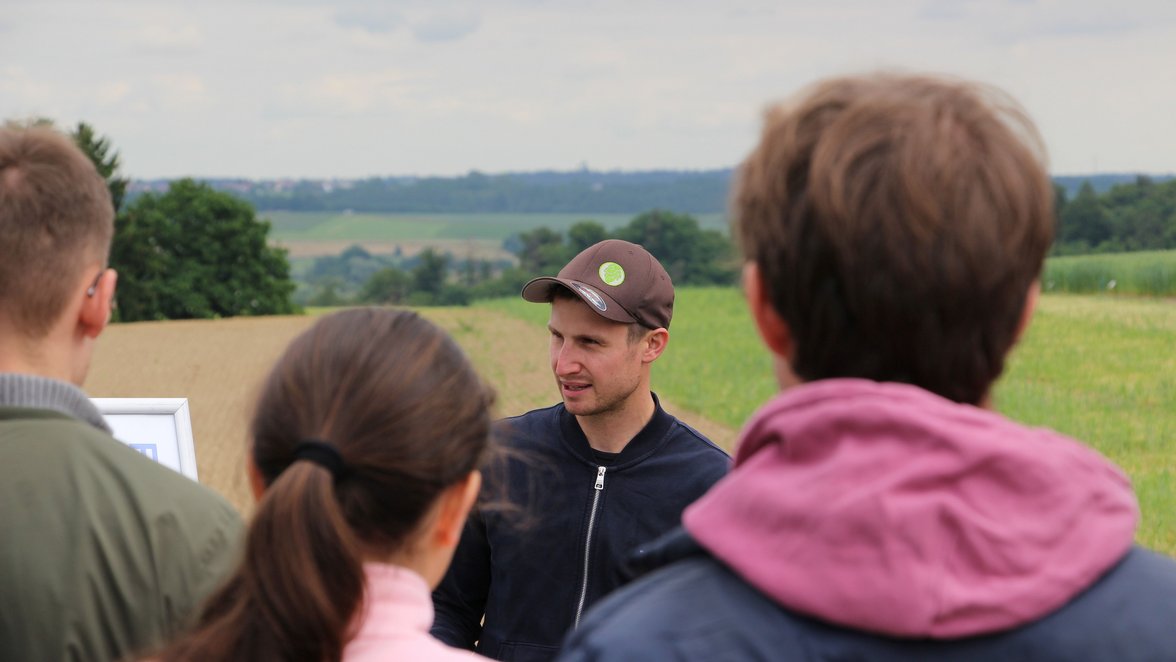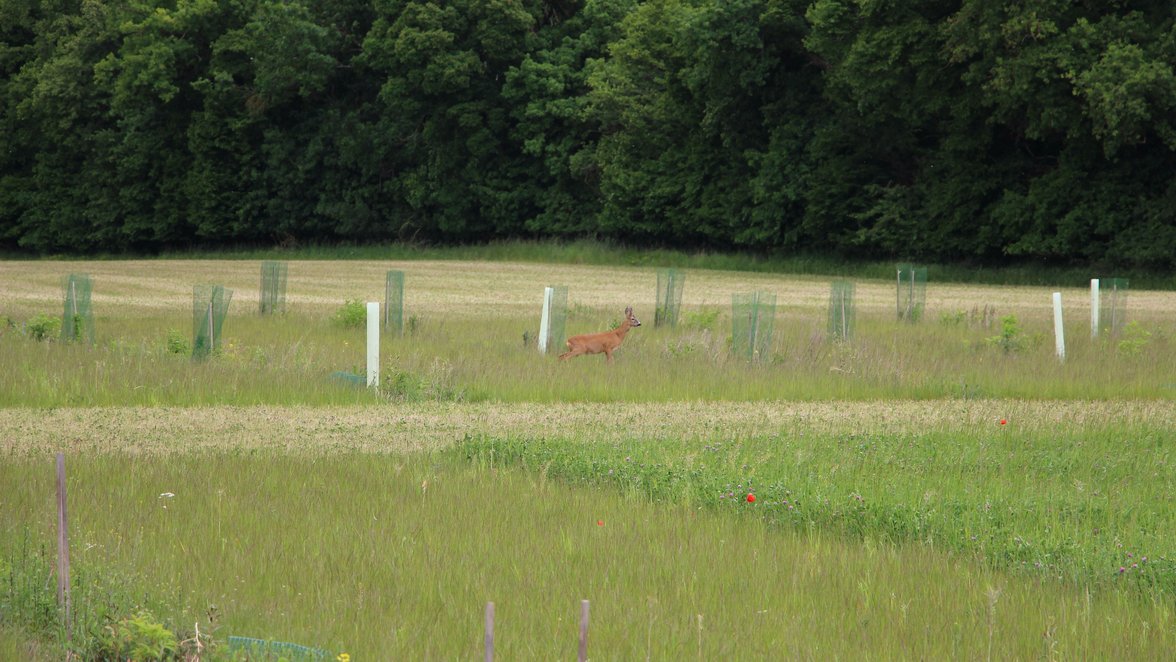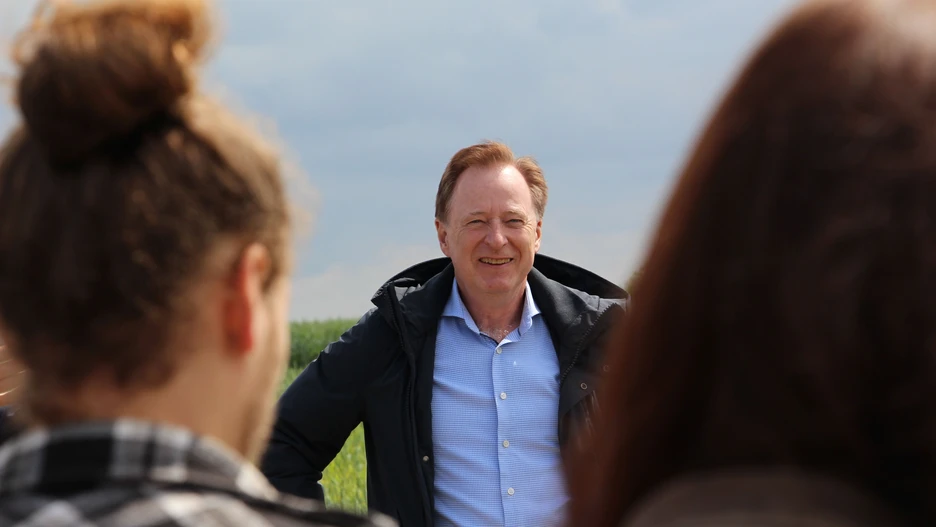Diversity of crop cultivation: On a field trip with Prof. Hülsbergen
News, Research, Event |
Pupils, students, employees, researchers: on Tuesday morning, Liesel-Beckmann-Straße is packed as the buses pick up all the guests. 40 participants from TUM and 40 other students meet to learn more about research in plant cultivation.
Measuring gases and flying high above the field
The first stop is Pettenbrunn, where experiments are carried out on the spatial variability of soils, plant populations and nitrous oxide flows. The drone flies over the group as Martin Mittermayer, a member of the faculty, explains the project: "We want to develop a management system here in which soil data, sensor and satellite data and management data are linked. In the field, we validate the values of the digital technologies with ground truth data - and thus ensure the accuracy of the data."
Biochar and legumes
In Thalhausen, the work continues in the soil. Here, experiments are being carried out on the influence of biochar on soil quality and yields. Different types of biochar are used. They have different porosities and are intended to have different properties in the soil, such as storing water, reducing emissions and more.
Emanuel Jaufmann surprises the guests: ammonia emissions increase in the first few years of using biochar, says the researcher. But: "We have a long-term trial here and are observing how this develops over the coming years. Results from other regions show that this changes when the biochar is integrated over a period of years."
Permanent field experiment conventional and organic cultivation systems
In Viehhausen, the researchers show the permanent field trials comparing conventional and organic cultivation systems. Guests can see the differences immediately with the naked eye.
One student reports: “The excursion is a unique opportunity to see the trials on site, otherwise you only hear about them in the lecture hall.” He is now already studying for a Master's degree, as the excursion did not take place during his Bachelor's degree due to coronavirus. This is another reason why so many students are taking part this year.
Agroforestry and fertilizer systems in Roggenstein
In Roggenstein, a tractor picks up the guests and drives them into the middle of the agroforestry systems experiment. In the experiment, strips of woodland and agricultural land are planted on the same area. These are sometimes arranged alternately, sometimes in groups next to each other. The aim is to promote biodiversity, but also to improve the resilience of farms using this system.
In addition to the trials on agroforestry systems, the researchers in Roggenstein are also conducting trials on biochar and various fertilizer levels. Fertilization according to DüV and with sensor systems are being compared on winter barley, silage maize and winter wheat.
